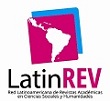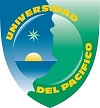Tropical wet forest, a framework of ecological reference for the phytosanitary handling in the tropico
DOI:
https://doi.org/10.47366/sabia.v4n1a11Keywords:
Agrobiodiversity, Tropical, Tropical ecosystems, Management of phytosanitary barriersAbstract
Given the immense environmental costs of phytosanitary practices in tropical regions, in this dissertation, the author presents, with a pedagogical and dialectical integration approach, from multiple scientific and technical perspectives, the importance of refocusing basic aspects of the management of phytosanitary Tropical agroecosystems, which are immersed in megadiverse forest ecosystems. The sequence covered includes, in the first part, aspects such as agriculture and simplification of forest systems, basic aspects of the natural condition of the Neotropic, consequences of the ecological simplification of forest ecosystems as a result of agriculture, the added value of singular agrobiodiversity derived from jungle ecosystems and their implications on plant health, the advantages of jungle exuberance: phytochemistry, allelochemicals, industrial precursors, pesticides, gene banks and germplasm, with such aspects as the agri-environmental benefits of this resource, something Which is widely explained in the second part when weeds are dealt with, which are assumed with a criterion of natural resource of great ecological possibilities, a dissertation that exposes many aspects of the wrong of despising the spontaneous vegetation, ending in a epilogue re-examines the mismanagement approach given to jungle ecosystems and the agro-ecosystems derived from them, given the artificial, eurocentric and ecologically erroneous external view of this natural condition and the consequences of introducing technologies originating in temperate regions that are implement and market in mega-diverse tropical ecosystems, with negative consequences for the ecosphere and human survival.
References
Altieri, M. A. 1976. Regulación Ecológica de Plagas en agroecosistemas tropicales. Un ejemplo; mono y policultivo de maíz y fríjol, diversificados con malezas. Tesis. Programa de Estudios para Graduados en Ciencias Agrarias, UN-ICA. Bogotá.
Altieri, M.A 1983. La desconocida y maltrecha selva tropical. Rev. CIMPEC 10(48): 4-7.
Beck, S.D. & L.M. Schoonhoven. 1980. 1980. Insect behavior and resistance. In Breeding plants resistant to insects. N.Y.; F.G. Maxell and Jennings, P. Eds. J. Wiley & Sons. 116-133 pp.
Bowers, W. 1980. Chemistry of plant-insect interactions. In: Insect biology in the Future. Locke M & D.S Smith editors. Academic Press 613-633 p.
Brattsten, L. 1979. Biochemical defense mechanisms in herbivores against plant allelochemicals. In: Herbivores their interaction with secondary plant metabolites, Rosenthal and Hanen, E. Editors. New York, Academic Press. 200-262 p.
Feeny, P. 1975. Biochemical coevolution between plant and their insect herbivores. In: coevolution of animals and plants. Gilbert L.E. and P.H. Raven. Editors, University of Texas Press. Austin. 1-19 pp.
Fitkau, E.J. 1976. Tropical rainforest. In: Grzimek’s encyclopedia of ecology. Grimek B, Editor. Van Nastrand CA. 286- 308 pp.
Fraenkel, G. 1959. The Raison d’etre of secondary plant substances. Science 129: 1466-1470.
Gentry, A. 1981. Phytogeographic patterns as evidence for a Choco refuge. In: ATB refugium symposium proceedings. G, Prance Editor Columbia University press.112-136 pp.
Gibson, R.WW, y I.a. Pickett. 1983. Wild potato repels aphids by release of aphid alarm pheromone. Nature 302 308-302.
Harris, B. C. 1955. Eat the Weeds, the Autor. Worcester, Mass., (new ed. 1961). 113 p.
Jacobson, M. 1958. Insecticides from plants. Agric. Handbook 154. U.S.D.A.
Janzen, D. 1970. Herbivores and the number of tree species in tropical forests. Amer. Natur. 104: 501-28.
Kreig, M.B. 1968. Medicina verde. Editorial Continental. 85 p.
Lewis, T. 1969. The diversity of the insect fauna in a hedgerow and neighboring fields. Jour. Appl. Ecol. 6: 443-52.
Mateus, G. 1982. Garrapatas de los bovinos. Referencia especial al Boophilus microplus. IX Congreso de la sociedad Colombiana de Entomología-Socolen. Memorias, 117-138 pp.
Mendoza, T; Patiño, H y Gonzalez A. 1982. Observaciones preliminares sobre biología y ecología de Mechanitis polymnia caucaensis. Haensch. IX Congreso de Socolen. Cali, 1982. Memorias.
Mora Osejo, L.E. 1977. El barniz de pasto. Revista Caldasia, 11 (55): 5-31.
Morton, J. 1969. Wild plants for survival in south Florida Hurricane. House publishers Inc. Miami. 76 pp.
Morton, J. 1962. Spanish needles (Bidens pilosa L) as a wild food resource. Economic Bot. 16: 173-180.
Nakanishi, K. 1980. Insect antifeedants from plants. In: Insect biology in the future. LOCKE, M. and D.S. SMITH. Editors. N.Y. Academic Press. 603-611.
Narvaez, A. 1980. Introducción al estudio de los ecosistemas neotropicales. Universidad de Nariño. Mimeógrafo. pp.57.
Ordetx, R. 1952. Flora apícola de la América Tropical. Havana Cuba. 196 p.
Patiño, H. 1980. Malezas, matorral, rastrojo … recurso natural de inestimable valor ignorado. Rev. COAGRO. 30: 9-12.
Patiño, H. y Zuluaga, L. 1975. Un modelo de trama ecológica en insectos. Res. Acta Physiologica Latinoamericana. 25: 25-26.
Patiño, H. & H. Quintero. Trascendencia ecológica de la selva tropical, con referencia especial al Neotrópico. Partes I y II. Rev. COAGRO. Nos. 38 y 39.
Patiño, H. Gonzalez, A. y Mendoza, I. 1983. Aspectos biológicos, ecológico biogeográficos evolutivos y agronómicos de interés didáctico en la mariposa Vallecaucana Mechanitis polymnia caucaensis Haensch, (inédito). Universidad Nacional Palmira. Mimeógrafo. 41 pp.
Patiño, H. Martinez, I., Kuratomi, S., Estrada, A., 1980. Relaciones ecológicas en la entomofauna asociada con Asclepias curassavica 1. Rev. COAGRO, 31: 25-30. 1980.
Patiño, H., Gonzalez, A. y Pardo, L. C. 1983. Aleloquímicos, un sistema bioinformático y biocibernético de especial significado ecológico y económico en el trópico (Mimeógrafo). Universidad Nacional Palmira, 1983. 38 pp.
Patiño, H., Marroquín. N., Bravo. N., Guzman. P., Martínez, I., Kuratomi S., & Esparza. E. 1980. Biología de la mariposa monarca y su hospedante principal la hierba algodoncillo. Rev. COAGRO 26: 24-30.
Patiño, H. Martínez, I., Kuratomi, S., Lozano, L. 1980. Observaciones ecológicas en mariposas del género Danaus. Rev. COAGRO. 27: 26-32.
Patiño, H., Cruz, J De La., Castillo, E., Figueroa, P., González, Guevara, P., Kuratolo, S & Pava, J. 1979. Control biológico natural del cachón (Erynnis ello) del caucho, en el bajo Calima. Rev. COAGRO. 25: 24-27.
Perez-Arbelaez, E. 1978. Plantas útiles de Colombia. 4° edición Litografía Arco, Bogotá, 832 p.
Reyes, J. 1976. Bidens pilosa una maleza con posibilidades en control integrado de plagas en Caña de Azúcar. En: Encuentro regional sobre interacciones cultivos, malezas, insectos. CIAT.
Rhoades, D. 1979. Evolution of plant chemical defense against herbivores. In: Herbivores their interactin with secondary plant metabolites. ROSENTHAL, G. and JANZEN, D. Editors. New York. Academic Press. 4-54 pp.
Schnell, H. 1970. Introduction a la phytogeographies des pays tropicáis. Paris. Gauthiers Villars Ed. Volumen I: 445 pp.
Schultes, R.E. 1979 La Amazonía como fuente de nuevas plantas económicas. En: Seminario sobre los Recursos Naturales renovables y el desarrollo regional amazónico. Bogotá. IICA- IGAC. 201-212 PP.
Swain, T. 1979. Tannins and Lignin’s. In: Herbivores their interaction with secondary plant metabolites. New York. Academic Press. 657-681 pp.
Towle, M. 1961. The ethnobotany of pre-Columbian Perú. Aldine Publishing. 180 p.
Van Eden, H.F. 1965. The role of uncultivated land in the biology of crops pests and beneficial insects. Scient Horticulture. 17: 121-136.
White, P. 1983. Nature’s dwindling Treasures Rain Forests. National Geographic. 163 (1): 2-49.
Williams, C. D. 1967. Third generation of pesticides. Scientific American 217: 13-17.
Downloads
Published
How to Cite
Issue
Section
License
Copyright (c) 2018 Sabia Magazine

This work is licensed under a Creative Commons Attribution-NonCommercial-ShareAlike 4.0 International License.
















